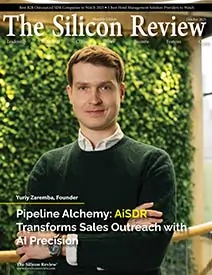>>
Industry>>
Food and beverages>>
Clean Color Mandate Pressures ...Clean Color Mandate Pressures Legacy Food Formulas into Overhaul
The Silicon Review
01 May, 2025
Driven by mounting consumer scrutiny and regulatory momentum, McCormick and others are rapidly reformulating to eliminate synthetic dyes—signaling a deeper transformation across the U.S. food supply chain.
As consumer sentiment sharpens and health-conscious demand rises, major food manufacturers are being compelled to re-engineer their formulations—fast. This week, McCormick & Company confirmed it is reformulating several of its top-selling products to eliminate synthetic dyes, underscoring a broader industry pivot toward naturally derived alternatives amid regulatory and reputational pressure. Although synthetic food dyes remain FDA-approved, they have become a lightning rod in consumer health debates, especially regarding their impact on children. In response, retail giants, including Target and Whole Foods, have increased pressure on suppliers to comply with stricter ingredient transparency and sourcing policies. McCormick’s move echoes an accelerating shift that’s moving from niche organic players to center-aisle titans—prompting a wave of chemical-to-clean reformulation.
The urgency has technical consequences. Reformulating at scale is a costly and complex endeavor, requiring advanced food science, supply chain retooling, and production recalibration. For industrial automation providers, this shift translates into heightened demand for precision dosing systems, AI-powered quality assurance, and automated traceability tools. These technologies are becoming essential not only for compliance but also to preserve consistency, shelf life, and consumer trust. Beyond compliance, this evolution represents a branding inflection point. Brands that proactively embrace dye-free innovation are positioning themselves as health-forward leaders. Those that lag risk becoming outdated in a market increasingly defined by label literacy and ingredient transparency.
Executives in the food and beverage industry should view this not as a temporary adjustment, but as a structural transformation. The synthetic-to-natural reformulation trend is gaining regulatory backing and market momentum. The winners will be those who invest early in smart automation, ingredient innovation, and cross-functional transparency to keep pace with both regulators and increasingly discerning consumers.
_2025-12-15_12-44-58.webp)


_2025-11-17_06-38-14.webp)

 (1)_2025-10-21_13-35-14.webp)
